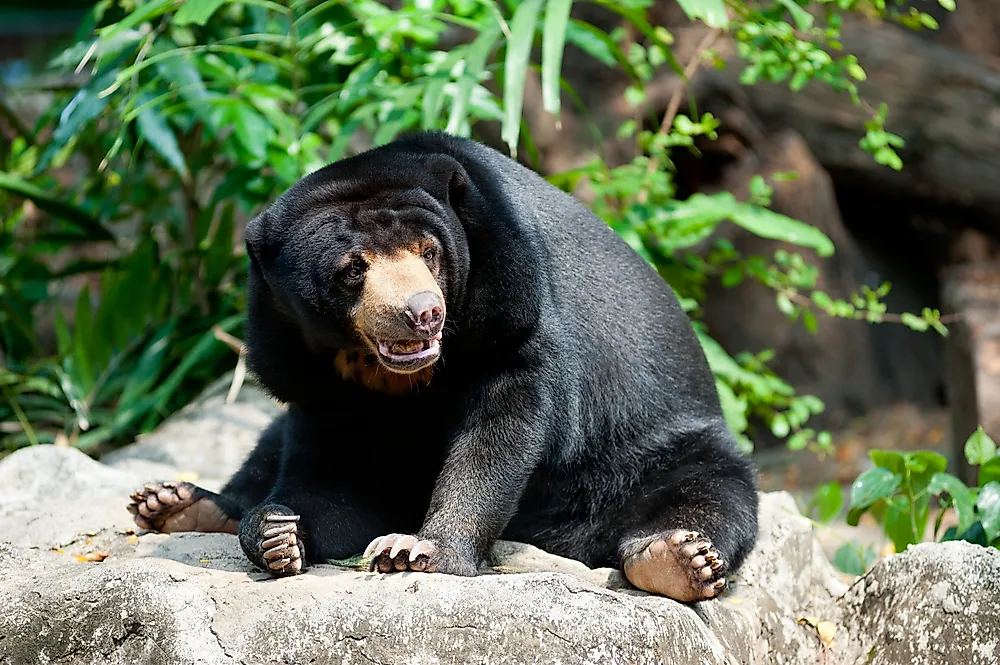Sun Bear Facts: Animals of Asia

Bears are carnivorous animals that are spread out mostly in the Northern Hemisphere with a few in the Southern Hemisphere. Currently, only eight species of the animal are alive with one of the species being sun bears. Scientifically known as Helarctos malayanus, the sun bear is native to the tropical forests of Southeastern Asia. There are two subspecies: the Bornean Sun Bear (H. m. euryspilus) and the Malaysian Sun Bear (H. m. malayanus).
Description
Sun bears usually have jet-black fur with some of them being gray or reddish. The animals have long tongues that are capable of extending up to 9.8 inches during feeding. The canines are huge with an exceptionally strong bite-force that is strengthened every day through activities such as crushing the trunks of tropical hardwoods. Regarding size, sun bears are the smallest among the eight extant species. On average, adult sun bears have a length of between 47 and 59 inches with a weight of between 60 and 176 pounds with the males being larger than females. Their tails range between 1.2 and 2.8 inches in length. Their muzzles are light-colored and short with the cream sickle-shaped claws being specially adapted for climbing.
Habitat
Sun bears live mainly in Southeast Asia in tropical evergreen forests of nations like India, Thailand, Laos, Cambodia, Peninsular Malaysia, and a few other places. In most of their natural habitats, they have been eliminated particularly in the mainland of Southeast Asia. The declining number and distribution is mainly due to an increase in human populations. Sun bears prefer the forest habitats because of food and protection from predators.
Diet
Sun bears are omnivores eating mainly termites, beetle larvae, nuts, ants, and a vast variety of fruits like figs. In addition, like most bear species, honey and bees are also crucial to the diet of sun bears. Vegetation is rare but certain growth shoots and some flowers are included in the diet. Using their long and strong claws and teeth, they tear open dead logs of trees in search of wild bees, termites, and other foods. Vertebrates on the menu include the likes of deer, birds, reptiles, and others.
Reproduction
At about three years old, females are ready to mate. Mating behaviors include hugging, head bobbing, and mock fighting. The pregnancy is gestated for between 95 and 174 days with a litter typically having one or two young ones. On average, the cubs weigh between 9.9 and 11.5 ounces. Due to their small size and blindness during birth, they are completely dependent on the mother. After 18 months they are weaned. Females mature earlier than males. On average, they have a lifespan of about 25 years in the wild while in captivity they may live for up to 30 years.
Conservation and Threats
Since 1979, sun bears have been listed on the CITES Appendix I which strictly prohibits hunting of the animals. Unfortunately, enforcement of these rules is lax which makes captivity programs such as those by the Association of Zoos and Aquariums all the more important. The main threats for the animals come from human beings through hunting and deforestation. Hunting of bears is not a problem that is unique to Asian countries alone. The animals are hunted for food as well as trophies.











